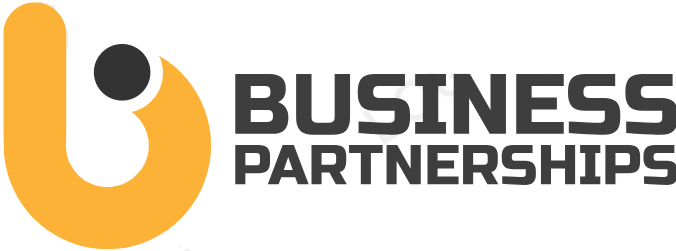Enhancing Customer Experience: The Role of Business Partnerships in Flooring Contractors
In today’s competitive market, delivering exceptional customer experience is paramount for businesses across all industries, including flooring services. Strategic partnerships between businesses and flooring contractors play a crucial role in enhancing customer satisfaction, improving service delivery, and driving business growth. This article explores how these partnerships contribute to elevating the customer experience in the flooring services sector, key strategies for collaboration, benefits, challenges, and future trends.
Importance of Customer Experience in Flooring Services
Customer experience encompasses every interaction a customer has with a business, from initial inquiry to post-installation support. In the flooring services industry, positive customer experiences build loyalty, generate referrals, and differentiate brands in a crowded marketplace. Key aspects of enhancing customer experience include:
- Personalized Service: Tailoring flooring solutions to meet customer preferences, lifestyle needs, and design aesthetics enhances satisfaction and project outcomes.
- Transparent Communication: Clear and timely communication about project timelines, costs, and expectations fosters trust and reduces misunderstandings.
- Quality Installation and Craftsmanship: Professional installation by skilled flooring contractors ensures durability, safety, and aesthetic appeal, meeting or exceeding customer expectations.
- Post-Installation Support: Providing warranties, maintenance tips, and responsive customer service enhances satisfaction and long-term customer relationships.
The Role of Business Partnerships in Enhancing Customer Experience
Business partnerships with flooring contractors contribute to delivering exceptional customer experiences through collaborative efforts:
- Access to Specialized Expertise: Businesses collaborate with flooring contractors who possess industry-specific knowledge, technical expertise, and installation skills. This partnership ensures high-quality workmanship and customer satisfaction.
- Expanded Service Offerings: Partnerships enable businesses to offer a broader range of flooring materials, styles, and customization options that cater to diverse customer preferences and project requirements.
- Innovative Solutions and Product Selection: Joint efforts in product research, development, and selection result in innovative flooring solutions that enhance performance, aesthetics, and sustainability.
- Efficient Project Management: Collaboration streamlines project workflows, scheduling, and resource allocation, ensuring on-time delivery and minimizing disruptions for customers.
- Enhanced Customer Support and Education: Partnerships facilitate comprehensive customer support, including pre-installation consultations, educational materials, and ongoing maintenance advice. This empowers customers to make informed decisions and maximize the lifespan of their flooring investments.
Strategies for Successful Business Partnerships in Flooring Services
To maximize the impact of partnerships on customer experience, businesses and epoxy flooring contractors can implement the following strategies:
- Shared Vision and Goals: Align on shared objectives, values, and commitment to delivering superior customer experiences through collaborative efforts.
- Clear Roles and Responsibilities: Define roles, responsibilities, and expectations for each partner to ensure accountability and seamless project execution.
- Continuous Communication: Maintain open communication channels for sharing updates, addressing concerns, and soliciting customer feedback throughout the project lifecycle.
- Quality Assurance and Standards: Adhere to industry best practices, quality standards, and safety protocols to uphold service excellence and customer satisfaction.
- Technology Integration: Utilize digital tools, project management software, and customer relationship management (CRM) systems to streamline processes, enhance transparency, and improve service delivery efficiency.
Challenges and Considerations
While partnerships offer significant benefits, stakeholders must navigate challenges to optimize customer experience:
- Consistency in Service Delivery: Ensure consistency in service quality, installation standards, and customer care across different projects and locations.
- Customer Expectations and Satisfaction: Understand and exceed customer expectations through personalized service, proactive communication, and responsive problem-solving.
- Competitive Market Dynamics: Adapt to competitive pricing pressures, market trends, and customer demands while maintaining profitability and service excellence.
- Regulatory Compliance and Licensing: Ensure compliance with licensing requirements, building codes, environmental regulations, and safety standards to protect customer interests and maintain legal obligations.
Future Trends and Opportunities
Looking ahead, the future of customer experience in flooring services will be shaped by emerging trends and opportunities:
- Integration of Smart Flooring Technologies: Adoption of smart flooring solutions with IoT connectivity, sensors, and digital interfaces for enhanced functionality and user experience.
- Sustainable and Eco-Friendly Flooring Options: Growing demand for sustainable materials, recycled products, and eco-friendly flooring solutions that align with environmental stewardship goals.
- Digital Transformation in Customer Engagement: Utilization of virtual reality (VR), augmented reality (AR), and online visualization tools to facilitate interactive customer consultations and design simulations.
- Enhanced Data Analytics and Customer Insights: Leveraging data analytics to understand customer preferences, behavior patterns, and market trends for personalized service delivery and targeted marketing strategies.
Business partnerships between businesses and flooring contractors are instrumental in enhancing customer experience through collaborative efforts in service delivery, innovation, and customer satisfaction. By leveraging specialized expertise, expanding service offerings, and prioritizing customer-centric strategies, stakeholders can differentiate their brands, build customer loyalty, and achieve sustainable growth in the competitive flooring services industry. Successful partnerships require shared goals, effective communication, and a commitment to delivering superior customer experiences that exceed expectations. As businesses embrace digital transformation, sustainability initiatives, and innovative flooring solutions, they will continue to shape the future of customer experience in flooring services, driving industry evolution and customer satisfaction.
